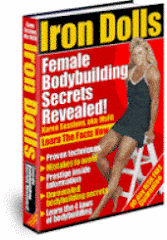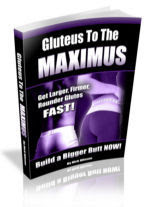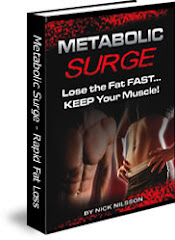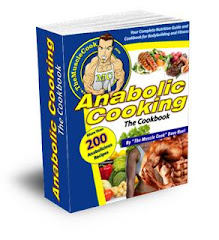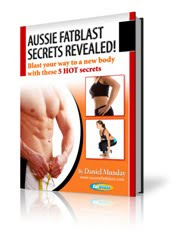HOME GYM - THE 4 MOST CRITICAL PIECES OF EQUIPMENT
Everyone knows how much I dislike commercial gyms - I prefer to train at home. Often I am asked what equipment to start with for more serious weight training.
Many people immediately think a multi station exercise machine is the first essential piece of equipment. Wrong. See my article on MACHINES VS FREE WEIGHTS. You will be amused to know that exercise machines were invented to "make exercise easier." How dumb is that? They do serve a purpose but if money is limited certainly do not make them your first choice. Yes I have one and use it as a supplement to my equipment. But I can achieve amazing results without it. By far my free weights such as barbells, bench, and dumbbells are predominant in my workout.
The only other essential equipment you will need (and your cheapest purchase) is a foam roller. Choose this over liposuction! Click here for my article on FOAM ROLLERS.
I think the article below from Nick Nilsson covers the essential home equipment well. It is much less expensive than you think.
The Four Absolutely CRITICAL Pieces Of Training Equipment You NEED To Start Your Home Gym WithBy Nick Nilsson
When you're putting together your first home gym, it's easy to get caught up in the promises of fancy multi-station machines and infomercial products. But before you do, save your money and have a close look at these four critical items that you SHOULD start your home gym with!
So you've got some space set aside in your home for a gym. You're ready to take the plunge and get some equipment so you can train without having to wait for equipment, listen to music you can't stand or wipe other people's sweat off machines.But where do you start? What equipment should you get in order to maximize what you can do in the space you have available? Should you get a multi-station machine? Maybe a Bowflex?
What's all this talk about being able to do more than 50 "club quality exercises?"
Right now, put that all out of your head. The equipment you need in order to maximize your space is simple and VERY basic and it will allow you to do literally HUNDREDS of exercises!And the best part is, you can get it CHEAP if you know the right sources...
Essential Home Gym Equipment #1 - Adjustable Dumbells
If I could only have one single type of equipment in my home gym, it would be a good set of adjustable-weight dumbells. You can do a HUGE variety of exercises for every single bodypart with just a simple pair of dumbells.
Getting adjustable dumbells means you can very easily change the weight you're working with while still not using up a whole lot of space in your home gym. If you have pre-made dumbells, you have to set aside space (or get a good dumbell rack) for rows of individual dumbells.If you've GOT the space (and the money!), pre-made dumbells are certainly more convenient to use. But if you're tight on room, lining up your dumbells may not be an option. And, of course, the pre-made dumbells are going to be a lot more expensive to get a decent range of weight for.
When it comes to adjustable dumbells, you've got several options. By far, the most convenient are the Powerblock style of dumbells (Bowflex and Nautilus also have products like this).With this style, all you have to do is basically flip a switch to set your weight on the dumbell. The whole thing is interlocking - they fit into the space of just two dumbells and give you a good range of weights to work with.
The other main options are the "make it yourself" free weight dumbells. With these, you've basically got weight plates and posts. With a good selection of weight plates, you can make a great range of weights.This style of dumbell will be a good deal cheaper than the Powerblock style but, on the downside, it does take more time to put the dumbells together and the weight posts sticking out can be a bit awkward. But overall, for the money, this style is still a very good investment, especially if you're looking to make some heavy dumbells.
Heavy Powerblock dumbells can be quite expensive (they have expansion sets that go up to 130 lbs) but even then, are still a substantial savings over the equivalent amount of pre-made dumbells.
Essential Home Gym Equipment #2 - Adjustable Incline/Flat/Decline Bench
Once you've got the dumbells, the next thing to get for your home gym is a solid bench. Ideally, you want a bench that is easily adjustable to incline, flat and decline settings. The more versatile it is, the more use you'll get out of it and the more exercises you'll be able to do with it.And when I say solid, I mean SOLID. Don't skimp on this piece of equipment. You don't want a bench folding up under you when you're in the middle of a hard set (or EVER for that matter!).
The adjustable bench will open up a wide range of exercises for you to do with your dumbells.
On a side note, you might wonder why I place a bench in front of a barbell set in order of "must-have." To be honest, it's a toss-up. Ideally, it would be best to get all four of these pieces of equipment that I'm going to talk about in this article at the same time! You would do just fine getting the barbell set before the bench as well.
Essential Home Gym Equipment #3 - 300 lb Olympic Barbell Set
So you've got your dumbells and a bench. Now it's time to get your barbell set. The nice thing with barbell sets is that at most sporting goods stores you can get a decent set for a good price brand new.When you're getting a barbell set, I HIGHLY recommend going for the Olympic bar set (the 7 foot long bar). The thinner bar (known as a Standard bar) has a much smaller capacity and will start to bend if you load it with more than 200 pounds or so. The thicker bar will be easier to grip as well.Once you've got the basic barbell set, you can very easily get more weight plates as you need them.
*** One VERY IMPORTANT thing to note about free weight...if you can, ALWAYS get it at a local place. If you buy it online, shipping charges will just about DOUBLE the price of your order (they charge for shipping by the pound).
Essential Home Gym Equipment #4 - The Power Rack
You've got resistance (the dumbells and barbell)...you've got apparatus (the adjustable bench)...now you need a "framework" to REALLY maximize the number of exercises you can do.When you have a rack, it opens up not only a much wider range of exercises, it also dramatically increases the safety and potential productiveness of your training.Because here's the bottom line with training at home by yourself...if you don't have a power rack/safety cage, it is NOT in your best interests to do barbell bench press or heavy barbell squatting. If you get stuck under a bench press bar with no help around, you're in big trouble!If you have to bail out on a heavy squat with no power rack to catch the bar, you have to release the bar, let it roll down your back and try and get out of the way as it crashes to the floor. And as fun as THAT sounds, it's no picnic (especially if your home gym isn't on a concrete floor)!
To be honest, I even recommend people who train at commercial gyms to do their barbell bench pressing in the power rack. It's an exercise that has the potential to injure you pretty seriously if you get stuck under it with no help around! Training it in the rack is much safer AND allows you to really push yourself without fear of getting stuck under the bar, which is INVALUABLE when you really want maximum results.
Even a VERY small home gym has space for a rack. My first home gym was in a 10 x 10 room and it worked like a charm! The barbell can be stored on the rack itself, the bench fits right inside the rack when not in use. Many racks also come with weight posts to hold your plates right on the sides of the rack itself, which saves even more space.Here's another great feature about some racks...the possibility of adding a weight-stack pulley to it. I got this with my rack and it was a GREAT investment. It opens up not only all the potential exercises you can do with pulleys but also exercises you can do that combine pulleys with the rack!
Honorable Mention of Essential Home Gym Equipment - The Swiss Ball
While the Swiss Ball (also known as an "exercise ball") isn't listed as an essential here, I also highly recommend grabbing one of these. They're inexpensive and they allow for a great variety of exercises to be performed, especially in combination with dumbells.Be sure to look for a ball that is good quality - burst resistant is a feature you definitely want. If a ball gets punctured (especially while you're on it!), you don't want it exploding underneath you and you falling to the ground. This is not good when it's just you on the ball...MUCH more so if you're using weight while you're on the ball! If the ball gets punctured, it should just slowly let out the air, giving you time to get off the ball.
WHERE TO GET THIS TRAINING EQUIPMENT:
When it comes to free weight, such as barbells and dumbells, your best is to stay local. As I mentioned above, shipping prices will KILL you if you order free weight online or by mail order. You can scout out garage sales for people getting rid of their stuff, or head directly to the sporting goods store.Sports Authority (if you're in the U.S.) generally has good prices on barbells, weight plates and dumbells.
If you're interested in getting a set of PowerBlock dumbells, you can read more about them here:http://www.fitstep.com/goto/powerblock.htm
When it comes to the bench and power racks, there are a lot of different options in terms of brands. Personally, my bench and rack are Body Solid, which I'm quite happy with. They're good quality and were very reasonably priced. Other good brands include Yukon, Nautilus, BodyCraft, and Ivanko.
As far as where to get racks and benches, online is generally your best bet, whether it be retail or getting them used through fitness classified ads.
EBay is another excellent option.
Some online retailers that I've had good success with in terms of overall price and shipping are:
Fitness Blowout http://www.fitnessblowout.com/
MuscleMag NE Pennsylvania http://www.musclemagnepa.com/
Bottom line...search around and compare prices. Feel free to find a good price and shop it around to other places to see if they'll beat it!
CONCLUSION:
If you have the space for it, setting up a home gym is TOTALLY worth doing IF you're the type of person who can self-motivate. Some people don't have the space or simply need the atmosphere of a gym to really make progress - nothing wrong with that!
Your home gym doesn't need to be (and shouldn't be!) complicated. Just a few basic pieces of equipment are all you need to do a tremendous variety of exercises and get great results.The best bodies aren't built with fancy machines or with "club quality exercises." The best bodies are built with hard work and gold-standard exercises like squats, bench press, deadlifts, barbell rows, etc., all of which can be done with the four pieces of "must-have" equipment that I've mentioned here: dumbells, barbells, benches and racks!
Nick Nilsson is Vice-President of the online personal training company BetterU, Inc. He has a degree in Physical Education and Psychology and has been inventing new training techniques for more than 16 years. Nick is the author of a number of bodybuilding eBooks including "Metabolic Surge - Rapid Fat Loss," "The Best Exercises You've Never Heard Of," "Gluteus to the Maximus - Build a Bigger Butt NOW!" and "The Best Abdominal Exercises You've Never Heard Of" all available BY CLICKING HERE . He can be contacted at mailto:betteru@fitstep.com
New Release: Explosive Vengeance
5 years ago






